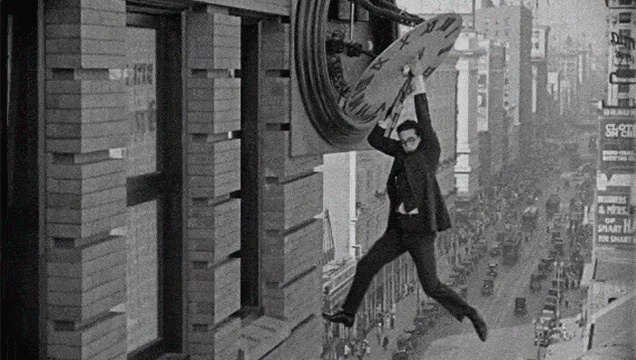When you can’t rely on a computer to improve (or fake) a movie scene, you gotta improvise. And back in the days of silent films, filmmakers were really, really good at coming up with creative ways to cook up special effects. It was a master class of using specific camera angles, splicing together shots, using glass matte paintings and twisting perspectives to make things look as realistic as possible.
Silent Movie GIFs is an excellent resource that reveals how things used to be done in the past. He detailed a lot of famous examples (like the one above of Harold Lloyd dangling off a clock in Safety Last!, which used perspective to make it look real) in a wonderful post here. It’s a fun read for anyone.
Here’s how Charlie Chaplin roller skated backwards and “almost” fell in a department store in Modern Times
How a background was added to a shot from Modern Times using a glass matte painting shot pic.twitter.com/4EddbfTOh8
— Silent Movie Gifs (@silentmoviegifs) January 6, 2017
The finished shot:
The end result in Modern Times (1936), looks like Chaplin is really in danger of going over the edge pic.twitter.com/2qjjzU04WX
— Silent Movie Gifs (@silentmoviegifs) January 6, 2017
This tricky matte shot from Buster Keaton in Sherlock Jr. is really cool too:
Buster Keaton seamlessly combines a matte shot and a crazy stunt in Sherlock Jr. (1924) pic.twitter.com/kSA9hMkcQg
— Silent Movie Gifs (@silentmoviegifs) January 7, 2017
And how it was done:
By placing a plate of glass partially painted black in front of the camera, Keaton on the motorcycle was filmed separately from the trucks pic.twitter.com/KHEiamPWES
— Silent Movie Gifs (@silentmoviegifs) January 7, 2017
